This review page is supported in part by the sponsors whose ad banners are displayed below |
 |
In the flesh, the Kaivalyas looked exactly as they had in the photos. Once before with a pair of French Triangle Magellan Cello Sw speakers, I'd admired white piano lacquer for its casual but strangely rare elegance. It's far easier maintained than gloss black. Becoming very unfriendly in no time at all, piano black reflects its environs and telegraphs finger prints and swirl marks from dusting like mad. Gloss white does neither. Hence white requires no special lighting tricks to photograph, no Photoshop post processing to eliminate flaws from a glossy center fold. What I received matched the professional photos to perfection. With the Kaivalyas, Trafomatic has not only produced the most handsome valve amps I've ever laid eyes on (that's just a besotted owner gushing of course) but the Serbian team has—and this is not debatable—also set new standards on fit, finish and internal execution for their company. Make no mistake, now they compete head-on against established boutique brands.
|
 |
Taking off the bottom cover via 15 bolts with proper metal inserts (not wood screws), one admires a nicely engraved aluminum cover which shields the entire circuit board on stand-offs. In plain view are two 10H coils, the small standby transformer and one horizontally mounted Russian military-issue paper-in-oil capacitor.
|
 |
Once the cover shield is removed, one sees a combination of PCB mounting and flying leads tidily routed and tied off. Critical transformer leads finish off in metal eyes bolted firmly to terminal blocks on the board.
|
 |
Tube sockets are high-quality ceramic units with gold-plated contacts. Resistors and caps are industrial grade rather than boutique issue. The 'real' artillery remains hidden from view inside the four potted transformer cans.
|
|
|
Below are the orange relays for the standby feature. One relay switches on the main power transformer, the other releases the B+ high voltage from the mains tranny.
|
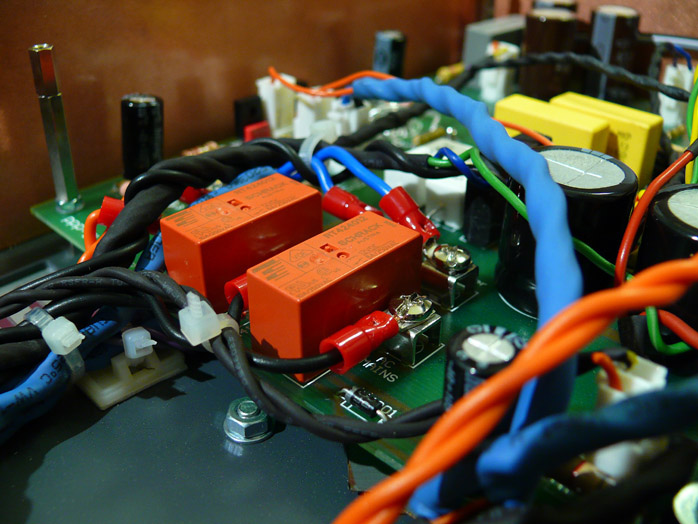 |
The wiring from the tube-socket contacts to the board is military-issue silver in Teflon.
|
 |
In the BD139 positions beneath/between the EL84 sockets [above] are the current-limiting overload transistors.
|
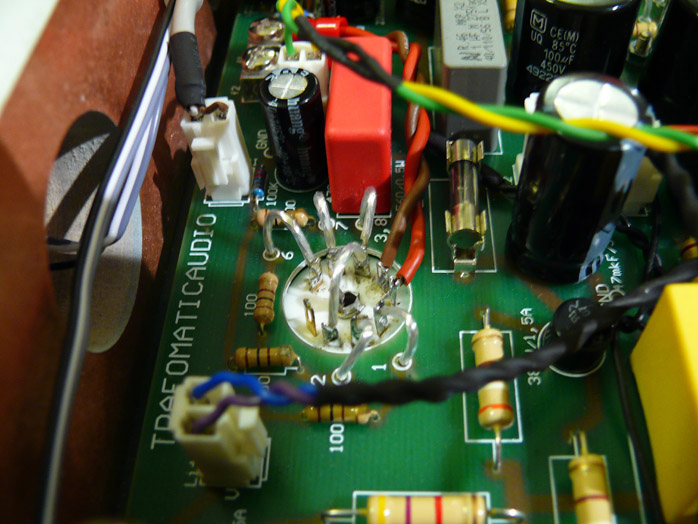 |
Next is the 10VA 230/14V transformer for the standby function. It is wound with a very small 0.6T induction value for reliable 24/7 operation.
|
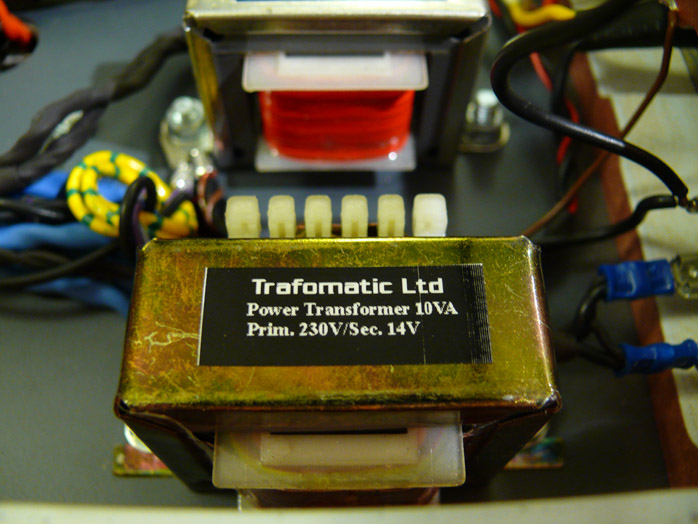 |
The two visible 10H/50mA chokes are for the G2 and ECC82 power supplies respectively. There is another 10H/400mA inductor inside one of the white top covers to smooth ripples in the high-voltage power supply.
|
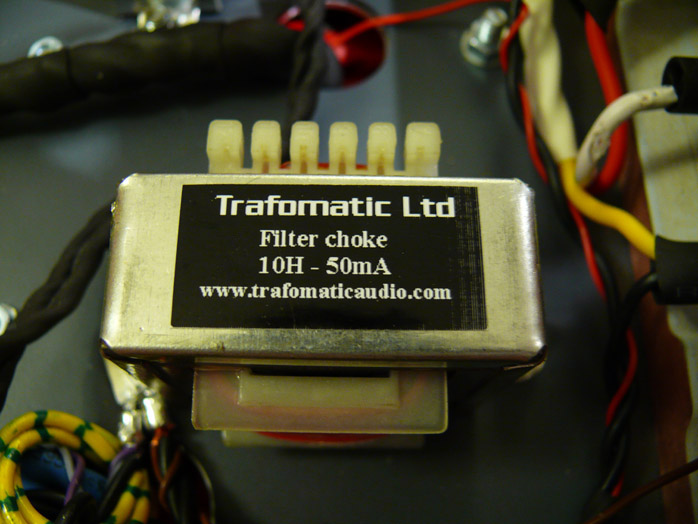 |
|
|
|
This 4mF paper-in-oil capacitor with the Cyrillic writing is for the B+ power supply.
|
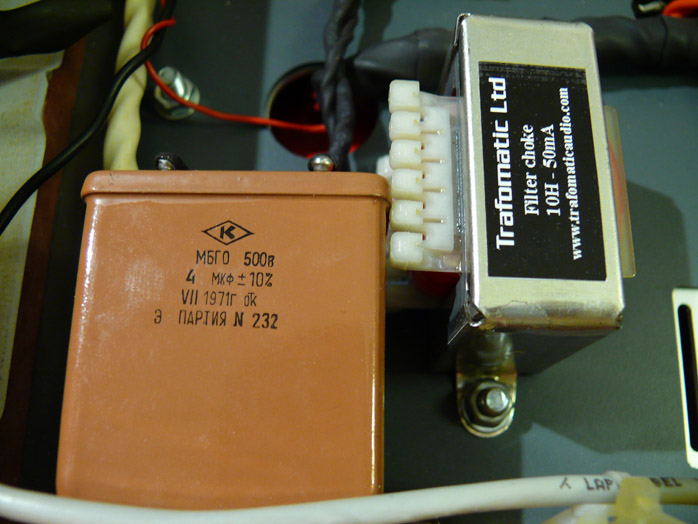 |
Here are more transformer leads with terminal-block board connections.
|
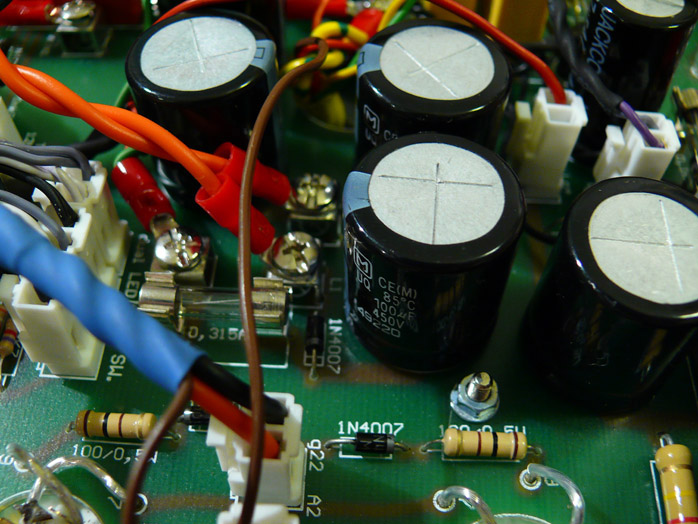 |
The gray block with the black writing below is a 1mF/400V bypass capacitor which parallels all power supply electrolytics and the sonically strategic paper-in-oil cap.
|
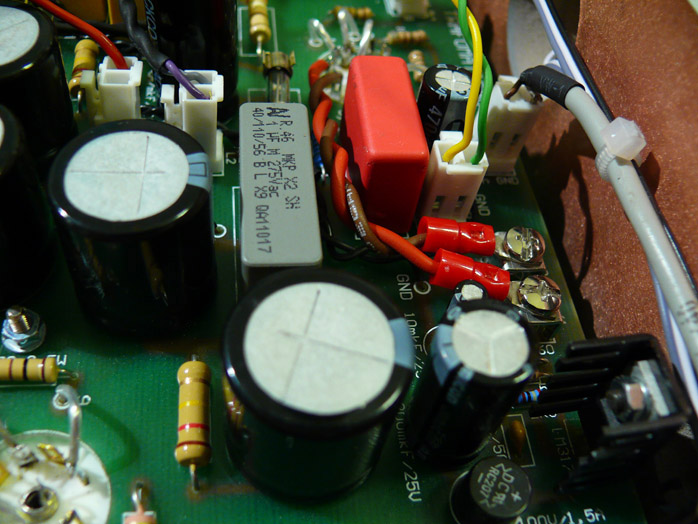 |
An LM317T voltage stabilizer for the ECC82 heater supply mounts to its own miniature heat sink in the corner.
|
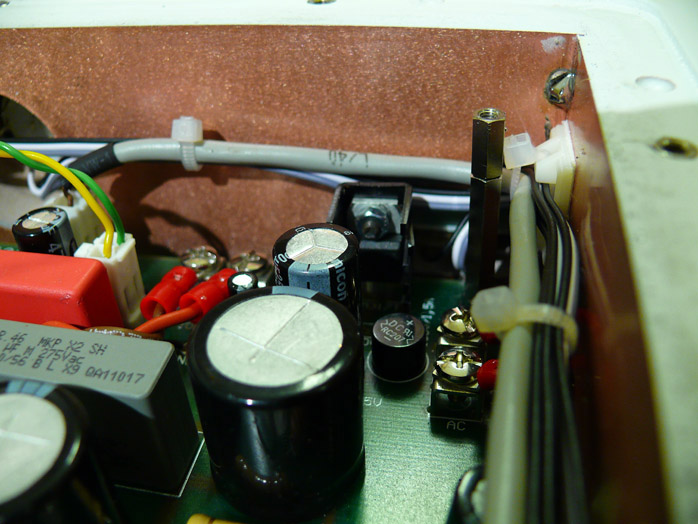 |
The entire circuit board really is just the amp's power supply. The signal path is 'above board' on the top deck. It consists of the lone NOS EI ECC82 input/driver triode, the complicated interstage transformer, the four Russian military EL84s in class A push/pull configuration and the custom dual C-core output transformer.
|
 |
The rear panel has 8/4-ohm tabs, one RCA input, a ground post and the power IEC. The i/o sockets are WBT.
|
 |
As delivered, the Kaivalyas perfectly embody my original vision. The simple fact is, they do it better than I'd dared imagine. The form factor and details Sasa Cokic and Milorad Despotovic
cooked up are simple yet elegant for a timeless classic chic. It's a nearly cool Nordic vibe from the Scandinavian design school, albeit realized in the heart of Eastern Europe. My entirely personal question was, would my gradual emancipation from valves turn around? I'm first to admit that transistors still won't do certain things tubes do so very easily. My audio journey has simply landed me in a place where what tubes do right is far overshadowed by where and how they arrive second, third or later yet to masterfully implemented transistors.
|
 |
Having owned a goodly number of valved machines over the years—and continuing to own select specimens for ongoing reference and reminders—my subjective yard stick is simply how much and for pleasure I listen to either the FirstWatt F5 or J2 versus any of my glow worms. If this were a serious tournament rather than one man's preference, none of my current valve amps (all of which are best-case scenarios after years of exploring the breed) even make it into my semi finals now.
|
 |
Would the Kaivalyas have me play for the other side again? |
  |
 |